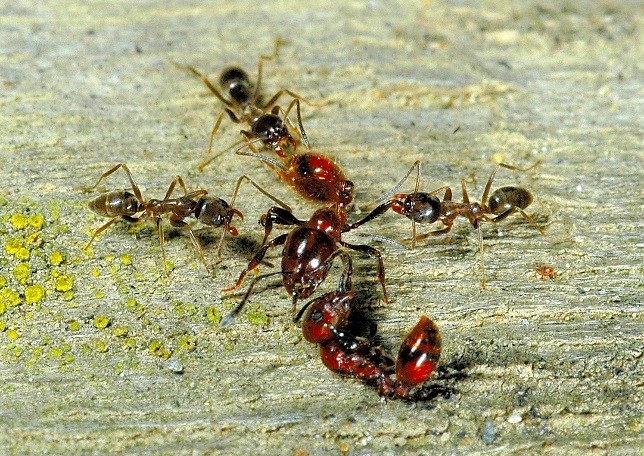Invasive ants found to carry novel virus and honey bee pathogens
A group of scientists, led by Victoria University of Wellington’s Professor Phil Lester, has discovered that invasive Argentine ants frequently carry a previously undescribed virus. These exotic ants also host a virus widely associated with honey bee deaths.A group of scientists, led by Victoria University of Wellington’s Professor Phil Lester, has discovered that invasive Argentine ants frequently carry a previously undescribed virus. These exotic ants also host a virus widely associated with honey bee deaths.
 A group of scientists, led by Victoria University of Wellington’s Professor Phil Lester, has discovered that invasive Argentine ants frequently carry a previously undescribed virus. These exotic ants also host a virus widely associated with honey bee deaths.
A group of scientists, led by Victoria University of Wellington’s Professor Phil Lester, has discovered that invasive Argentine ants frequently carry a previously undescribed virus. These exotic ants also host a virus widely associated with honey bee deaths.
Argentine ants (Linepthema humile) are an invasive pest spread throughout most of New Zealand. They are listed in the 100 of the world’s worst invasive species, with abundant and widespread populations found on every continent except Antarctica. The ants negatively impact on crops and are a household problem in urban areas.
The research team includes biologists from Victoria University’s School of Biological Sciences and a group known as “Virus Hunters” from the Institute of Environmental Science and Research (ESR).
The team spent three years collecting and analysing genomic data of Argentine ant populations in New Zealand, Australia and Argentina.
Professor Lester says the results revealed nearly all of New Zealand’s Argentine ant populations carried the Deformed Wing Virus, a pathogen associated with colony collapse of honey bees.
“This discovery tells us that Argentine ants are much more of a problem than we previously thought. They host the same Deformed Wing Virus strain found in bees and wasps in New Zealand, and this virus has contributed to declines in honey bee populations around the world. Argentine ants are known to raid beehives and also forage in the same environment as honey bees. Such close contact is bad for bees, as their association promotes pathogen exchange,” he says.
The presence of this honey bee virus brings a new dimension to concerns over invasive species. The ants’ abundance and wide distribution, together with their ability to carry devastating viruses, means that such invasive species may have much more of a negative impact than previously thought.
But the researchers also discovered an entirely new virus in the invasive pest species that could assist the ants’ own population decline.
“This virus hasn’t been seen before, but it’s related to other viruses that can devastate populations of other insect species. If managed correctly it could be used as a biopesticide both in New Zealand and overseas,” Professor Lester says.
Victoria’s commercialisation office Viclink is supporting the group translate its finding into a marketable product. “This is an exciting opportunity to develop a naturally-derived species-specific insecticide that could reduce reliance on chemical products, which often indiscriminately kill all insects,” says Viclink senior commercialisation manager Jeremy Jones.
“It could be a game-changer for our fruit and wine industries where controlling this ant is a growing problem.”
The research team, comprises Victoria University postdoctoral research fellow Monica Gruber, PhD student Alexandra Sébastien, and ESR’s Dr Richard Hall, Jing Wang and Nicole Moore.
The team has already begun the next phase of research investigating the novel virus as a biopesticide and its potential to be used for the control of Argentine ants.
Their research can be read in full in the latest issue of the Royal Society journal Biology Letters.
For more information contact Professor Philip Lester on 04-463 5096, or phil.lester@vuw.ac.nz
